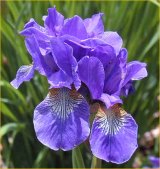Nutritional Outlook – A Canon Communications LLC Publication
The Manufacturers Resource For Dietary Supplements & Healthy Food and Beverages
http://www.nutritionaloutlook.com
Reprinted from Nutritional Outlook, November/December 2002 • Copyright © 2002 Canon Communications LLC
2002 Nutritional Manufacturer of the Year – Nature’s Sunshine Products
A Place in the Sunshine
One thing Nature’s Sunshine Products (NSP; Provo, UT) takes seriously is its commitment to quality. It exists in the hearts and minds of NSP employees. And it lives in the design of the NSP plant in Spanish Fork, UT. The company’s newly renovated plant, a monument to good manufacturing practices (GMP) compliance, helped ensure its selection as one of Nutritional Outlook’s two 2002 manufacturers of the year.
COMPANY SNAPSHOT
Company: Nature’s Sunshine Products
Headquarters: Provo, UT
Manufacturing Facility: Spanish Fork, UT
Number of Employees: 1109
Estimated Annual Sales: $320 million
Number of SKUs: 7500
Date Founded: 1972
MAMMOTH EXPANSION
According to Chuck Bruton, director of project engineering and facilities, NSP recently completed a five-year, $21-million expansion of its manufacturing and distribution facility. The company began the project in 1998 to keep pace with the burgeoning demand for nutritional products. Architectural and engineering firm Case, Lowe & Hart Inc. (Ogden, UT) and contractor Layton Construction Company, Inc. (Sandy, UT) were called in to do the renovation.
“We were looking at the appropriate way to plan for the company’s future manufacturing capacity needs while maintaining our high standards of GMP compliance,” explains Bruton. NSP actually considered several options, including building another manufacturing site elsewhere, before settling on the expansion. “We decided to expand the current facility in part because of the excellent workforce we already had here at Spanish Fork,” he notes. “In addition to simply expanding capacity, we took the opportunity to redesign work flows and upgrade GMP finishes and mechanical systems.”
For the first phase of the expansion, the company added 130,000 sq ft to its
existing building, more than doubling its square footage. NSP decided to use 60,000 sq ft of the new space as a distribution warehouse and reserved the other 70,000 sq ft for use as a new manufacturing area. During the expansion’s second phase, the company built up the new manufacturing area and completely renovated the old space that previously was used for manufacturing.
NSP also constructed four new quality assurance laboratories and renovated the new-product-development pilot plant, effectively doubling square footage dedicated to QA and R&D functions. “All of the mechanical systems have been upgraded throughout the facility as well, including the purified process water system, air filtration, dust collection, and hot-water systems,” Bruton adds. “All finishes in the facility have been designed and installed to meet the highest GMP standards.”
SHOPPING SPREE
To fill the new space, NSP purchased $3 million worth of new processing equipment, including an L. B. Bohle–based (Bristol, PA) bin mixing system, two Thomas Engineering (Hoffman Estates, IL) 60-in. Accelacoaters, a CIP-enabled liquid-processing center equipped with two 750-gal mixing tanks, a new encapsulation machine for the pilot plant, three order pickers for the distribution warehouse, tooling replacement and upgrades for the tablet press equipment and encapsulation machines, and computer upgrades throughout the facility.
NSP’s liquid-processing system is based on two 750-gal working capacity jacketed liquid-mixing tanks. The purified water and tank jackets are temperature controlled, and purified water is automatically batched into the tanks. According to Bruton, the tanks, piping, and filler are also fully CIP capable.
The new L. B. Bohle bin system consists of four conical mills, 40 mixing bins, a PMS 2000 bin mixer, an HS 2000 bin hoist, a pilot bin mixer with 30- and 50-L bins, and a two-station bin-washing system with HEPA-filtered bin drying rooms. Bin systems, which are used more often in the pharmaceutical industry than the nutraceutical industry, offer several distinct advantages over other systems, according to Bruton. “The main advantages to a bin system are a reduction in handling, reduced transfer from one vessel to another, and reduced exposure while in processing,” he says. “From the time that ingredients are entered in the 200-L stainless drums used for issuing, the powder and the ingredients are in an unopened, airtight container.”
Before acquiring the bin system, NSP had used a V blender and a horizontal-shaft plowshare high-shear mixer. “We felt that the former didn’t have good enough mixing efficiencies, while the latter, though efficient, put too much energy in the mix, causing a degradation of granulations,” Bruton says. “The Bohle system, through the gentle tumbling action helped by the tooling in the lids, does an excellent job of mixing. In fact, we have shown an overall improvement in mixing results.”
Operators can clean the bins using the bin-washing system, which sanitizes the containers with detergent and pure water rinses. The bins are then wheeled into a specially constructed drying room that is heated to 140°F with HEPA-filtered air. Another advantage of the bin system is that it is self-contained and thus dust free, which reduces the possibility of material loss and cross-contamination.
“Cross-contamination is an area that we are extremely careful about,” says Bruton. “In order to produce safe, high-quality products each and every time, we are committed to managing contamination of any kind.”
To achieve that end, NSP also installed extensive water and air-purification systems throughout the plant. “In the purified water system, culinary water is routed first through carbon filters that remove chlorine and then through a water-softening system to reduce the mineral content,” explains Bruton. “The softened water then runs through a reverse-osmosis water purifier and an ultraviolet sterilizer before being sent into a 1500-gal central storage tank.” The water is routed through a continuously circulating loop that runs throughout the building in 316L stainless-steel piping. As the water enters the distribution loop, it passes through a 1-µm prefilter, through another ultraviolet sterilizer, and through a .2-µm absolute filter.
The plant’s air-filtration system is also designed to ensure purity. “We use a combination of highefficiency filtration, 100% outside air, and pressure differentials in certain areas to control cross- contamination,” Bruton says. “In the processing areas, we use 100% outside air, pass it through high efficiency filtration, and then pass it into the rooms. It is then exhausted through the dust-collection system and is not recirculated into any other areas. We also use high and low air-pressure zones to control airflow between areas that have the potential to be contamination hazards.”
Article Continued In Next Column
Your Health Freedom May Be At Risk! Check Our CODEX/Activism Section | Main Articles Page |
Back To Top
QUALITY CONTROL
NSP’s commitment to quality is evident not only in its purification systems, but also in the design of its quality assurance and product-development facilities. The company operates both a dedicated herb lab and a dedicated vitamin lab to test the quality of its raw and finished materials. In addition, NSP also makes use of a fully stocked micro lab. The company also benefits from the work of its
own in-house methods-development group, which creates and publishes methods for ingredients testing. “The herb lab conducts the necessary tests to assure the quality of herbal raw materials, in-process ingredients, and finished herbal products,” explains Lynda Hammons, vice president of quality assurance and regulatory affairs. NSP rejects 4–5% of the raw materials it receives, according to Hammons, because they don’t meet the company’s high purity standards.
The battery of tests conducted on each sample includes: Organoleptic ID testing of raw-material herbs, thin-layer chromatography for the identification of active components compared with a reference standard, Fourier transform infrared spectroscopy (FTIR) to provide a fingerprint of the material being tested and compare it with a reference standard, ash testing to make sure that a sample is not contaminated with dirt or metal, and acid insoluble ash testing to determine whether the ash left after burning consists of metal particles. The herb lab also has a gamma counter that can be used to measure cesium 134 and cesium 137 radiation in herb samples.
“The herb lab also tests particle size of the raw material and tapped density to assure that the material can be used efficiently in processing,” Hammons adds. “This laboratory also performs a disintegration test on all tablets and capsules to ensure that they meet USP guidelines for tablet and capsule disintegration. The same tests are performed on stability data to assure shelf life. Each lot of raw-material herbs is tested against an approved specification, and each finished product lot is tested to assure that label claims are met.”
NSP’s vitamin lab is used to perform analysis on vitamins and other nonherbal materials. The lab also conducts dissolution testing of the company’s timed-release products. “For example, NSP has a timed-release vitamin C product that is designed to release a certain amount of vitamin C each hour until the tablet is completely dissolved,” Hammons notes. “This dissolution apparatus along with high-performance liquid chromatography (HPLC) can determine
the amount of vitamin C released each hour.”
The vitamin lab also uses HPLC to identify and quantify active compounds along with gas chromatography to identify and quantify actives in liquid extracts and essential oils as well as pesticide residues and methyl mercury. “We also run specific gravity, refractive index, viscosity, and any other specialized test that may be unique to that raw material,” Hammons notes.
Frequent calibration is one key to the success of the labs. “The HPLCs are calibrated with each run of samples,” says Hammons. “The calibration is necessary to minimize the possibility of error from the instrument. The response of the instrument at the time of analysis provides the most accurate measure of the sample. Also, some analyses are performed infrequently and calibration is mandatory for accurate measurement. Other equipment, such as the ICP/MS, FTIR, and Uv/Vis, are calibrated daily.”
NSP’s micro lab contains several bioMerieux (Durham, NC) bactometers, which can rapidly detect the presence of microorganisms. This technique allows for higher sample throughput and a more cost-effective method for preventing microbiological contamination. According to Hammons, NSP was the first herbal company to validate the use of the bactometer. “The bactometers provide a rapid detection of organisms present in a sample,” Hammons explains. “Traditional techniques have a minimum of two days to discover whether or not microorganisms are present. The bactometer can determine if organisms are present in a day or less.”
NSP also prides itself on its methods-development group. According to Hammons, many existing methods don’t work on herbal formulas that use matrixes or combinations of herbs. Thus, the group develops its own methods, which it publishes and shares with its vendors and others in the scientific community. Some examples include NSP’s method for HPLC determination of parthenolide in the herb feverfew, which was published in 1999 in the Journal of Agricultural and Food Chemistry, and a comparison of HPLC analyses of anthocyanins in grape seed extract and bilberry, which was presented at the annual meeting of the Federation of Analytical Chemistry and Spectroscopy Societies in Providence, RI, in October. In all, NSP has 17 people working in its QA/QC department. The R&D and health sciences group includes 26 people, seven of whom hold PhDs.
Sampling and inspections are important parts of the QA/QC operation. Five cross-trained raw-material inspectors examine ingredients in a dedicated raw-material sampling room. Moreover, NSP keeps batch records, along with actual retention samples of each lot, for a minimum of each product’s shelf life plus one year. “Since the longest shelf life is five years, we keep all records and samples for six years,” says Hammons.
Because NSP distributes products in 33 countries, the company pays particular attention to ensuring that the right formulas and labels are sent to the right countries. Each country may have its own standards; for instance, the herbs kava and ephedra are allowed in some nations but not in others. Keeping track of the regulatory requirements for each international marketing region can be a daunting task; therefore, NSP also uses a dedicated in-process label inspector to confirm that product labeling is correct. In addition, labels are stored in a secured area and verified at point of application by bar code. “We have thousands of products, and that equals a lot of labels,” says Bruton. Mislabeling is the single biggest source of product recall in our type of industry.”
THE FUTURE
Much of the additional space created during the expansion has intentionally been left open so that the company can take advantage of whatever demand the future holds. “The number of material preparation rooms increased from two to four, and the encapsulation and tabeleting processing suites increased from nine to 24,” notes Bruton. “Additional space was also added for two more packaging lines, and the packaging rooms were increased in length from 50 to 100 ft. As the future business need dictates, the additional rooms will be outfitted with the appropriate equipment and put into service.”
Despite the extensive renovation, NSP still plans more capital improvements in the months ahead, including the addition of a third 150-hp steam boiler for increased capacity in process load heating, an upgrade of the new liquid processing center to include a third 750-gal mixing tank, the purchase of a rotary capper for the liquid-processing line, the purchase and installation of a bottle washer for the liquid-processing line, and the acquisition of a mercury analyzer for the quality assurance area. Each of these additions to the facility can be traced back to NSP’s core mission. “The investment in our new expansion represents NSP’s commitment to its corporate values of quality, service, and integrity,” explains John DeWyze, vice president of operations.
This year, NSP celebrates its 30th anniversary. During that time it has grown from a small family business into a large international company that takes in more than $300 million per year in revenue. As NSP founder Gene Hughes discovered when he launched the business three decades ago, quality is the key to running a successful nutritional company. NSP’s improved manufacturing facility will help ensure that the company celebrates many more milestones down the road.







